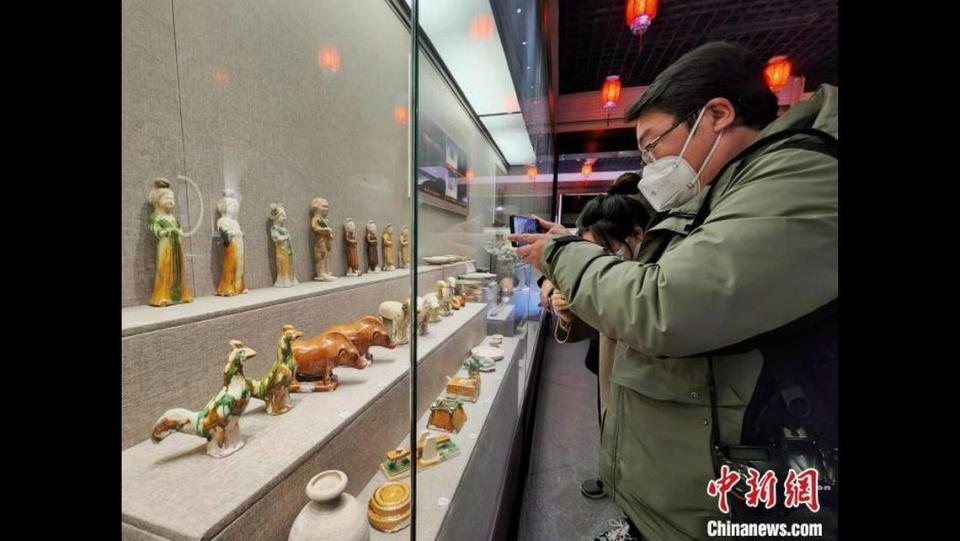Trove of Chinese pottery from more than 1,000 years ago unearthed in tomb. Take a look
A trove of ancient Chinese pottery and porcelain was unearthed in a tomb that could be more than 1,000 years old, archaeologists say.
The collection is made of more than 50 tricolor lifelike figurines, 20 porcelain pieces and a box of epitaphs, experts from the Jinan Municipal Institute of Archaeology said in a news conference, according to the Institute of Archaeology at the Chinese Academy of Social Sciences via China News Network.

Archaeologists said the discoveries were found at the Fanjia site in Jinan and date to the Tang dynasty — 618-907.
Among the collection, archaeologists said they uncovered dozens of realistic maids, cattle, sheep, ducks and terracotta soldiers. Some of the soldiers are close to 3 feet tall, the institute said.

The lifelike figurines are an example of Sancai, a style of tricolored pottery that was common at the time, experts said. The pottery pieces were covered with a low-fired lead glaze that was tinted with copper, resulting in shades of yellow, green, brown and sometimes blue, according to Brittanica.

The collection of pottery is the most complete and abundant of its kind, according to He Li, the head of the excavation project.
Li said the box of epitaphs revealed the tomb belonged to Zhu Man, whose family was prominent in Qingzhou during the era. The epitaphs indicates he was buried during the Kaiyuan reign — a prosperous period during the Tang dynasty, lasting from 742 until 755.
Experts say the tomb and pottery are significant in understanding the population changes that occurred during the Tang dynasty. The Zhu family was known in Qingzhou, but this tomb was located more than 100 miles west, in Jinan.
The team plans to restore and study the artifacts, and determine which kiln they were made in and how they were moved to Jinan, according to the institute.
Jinan is about 270 miles south of Beijing.
Google Translate and Baidu Translate were used to translate news releases from the Institute of Archaeology at the Chinese Academy of Social Sciences.
4,000-year-old city along Chinese river is a breakthrough for understanding ancient life
Hospital construction uncovers ancient, treasure-filled tombs in China. Take a look
Trove of rare tombs — some with preserved bones — unearthed in China, photos show

